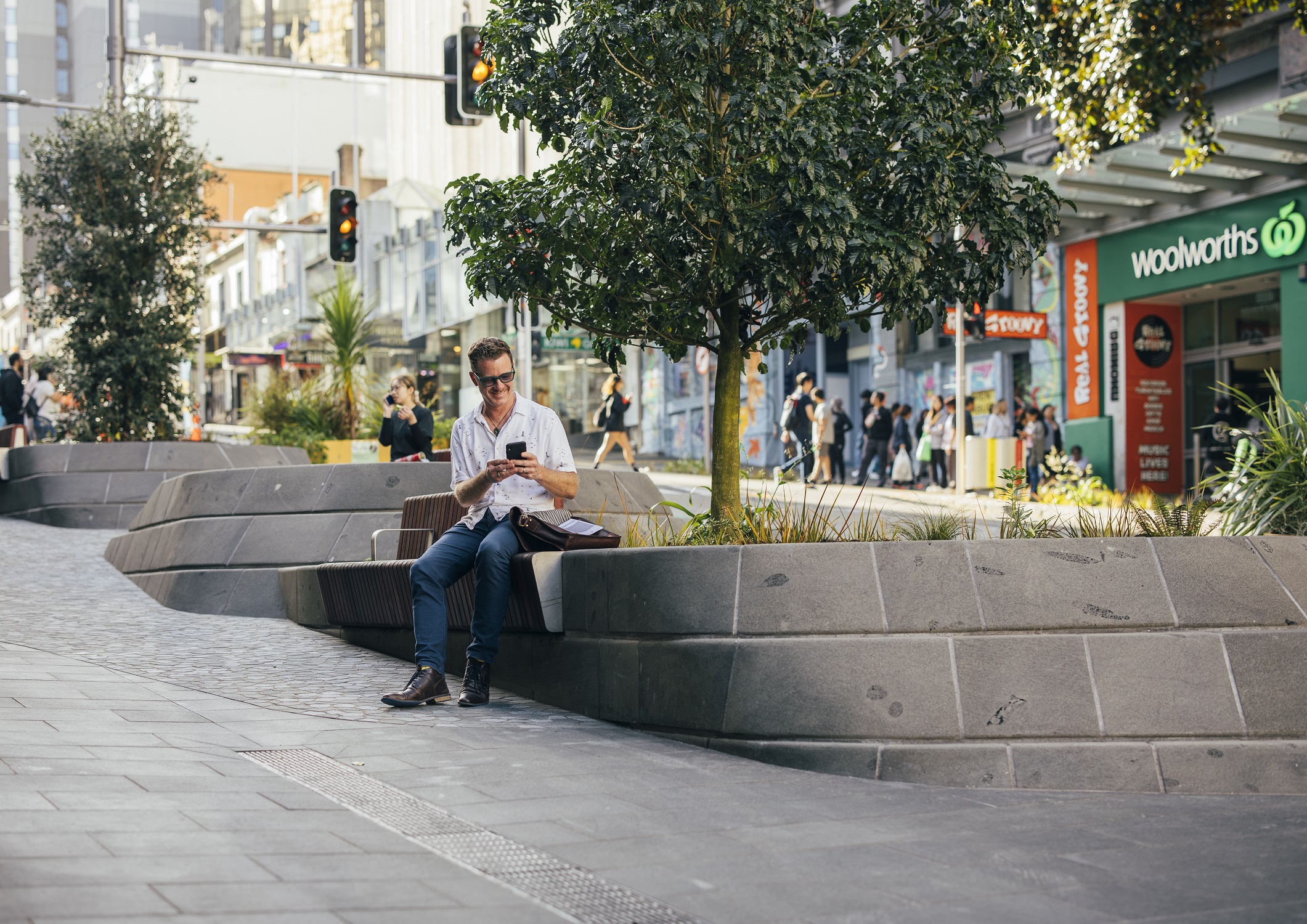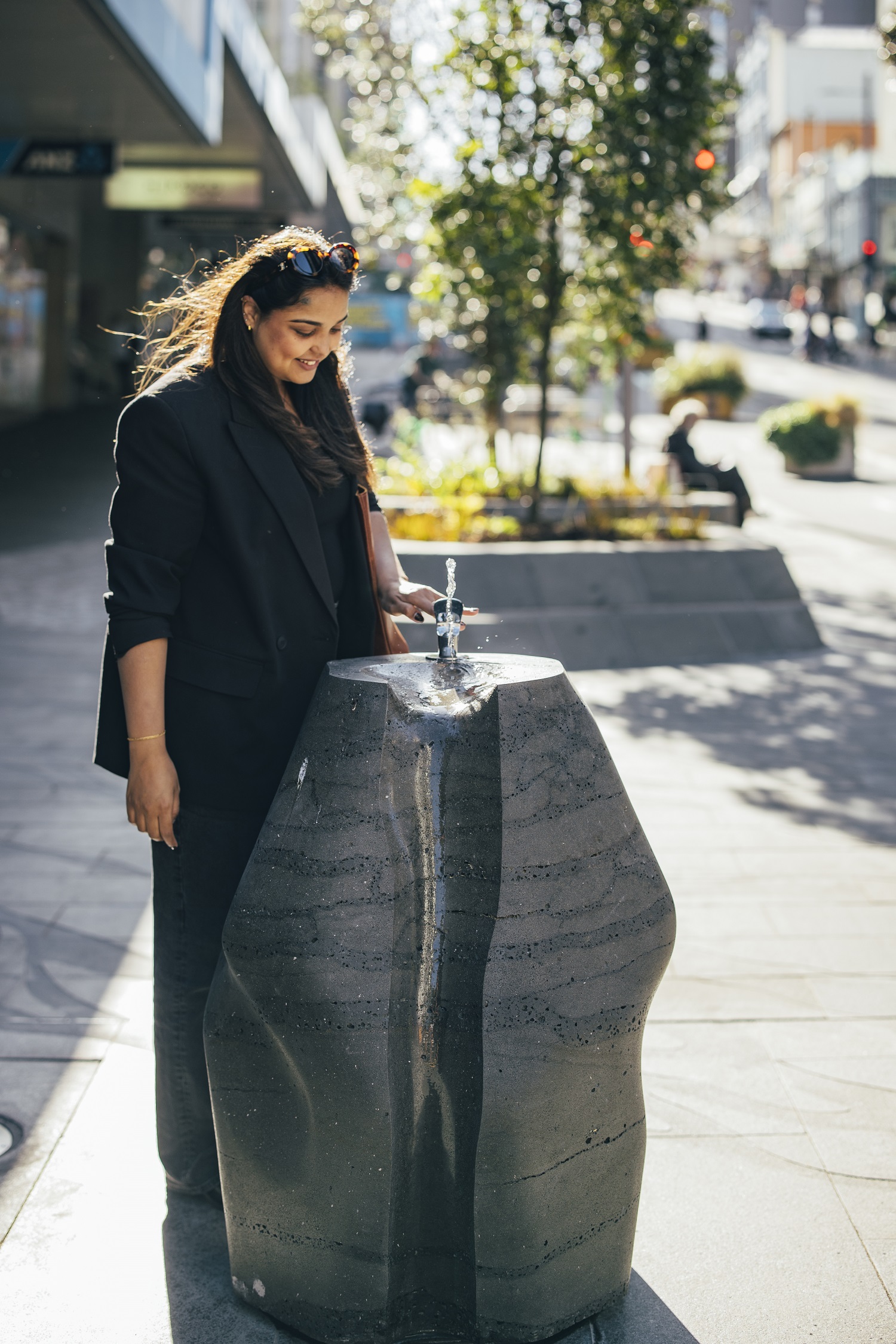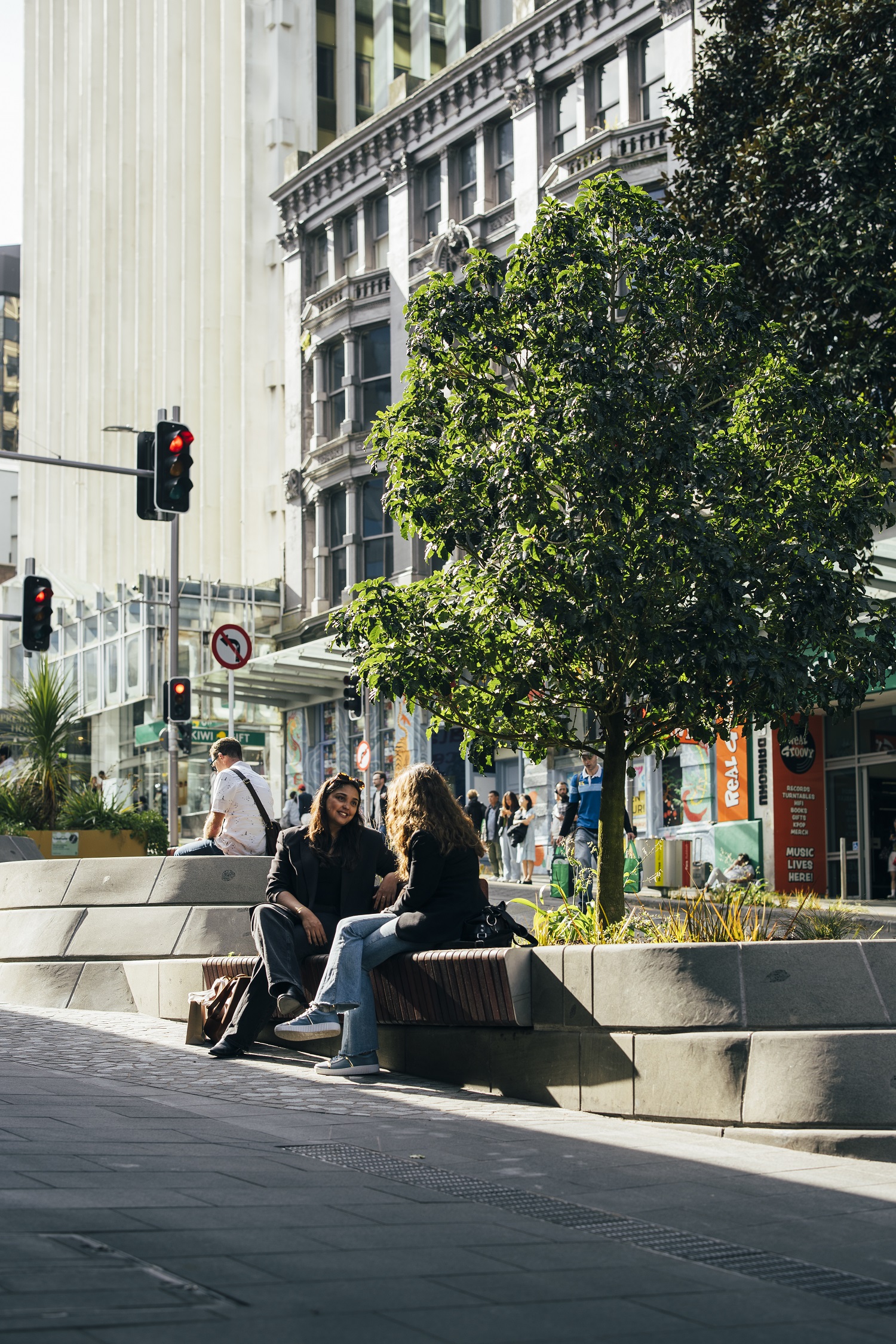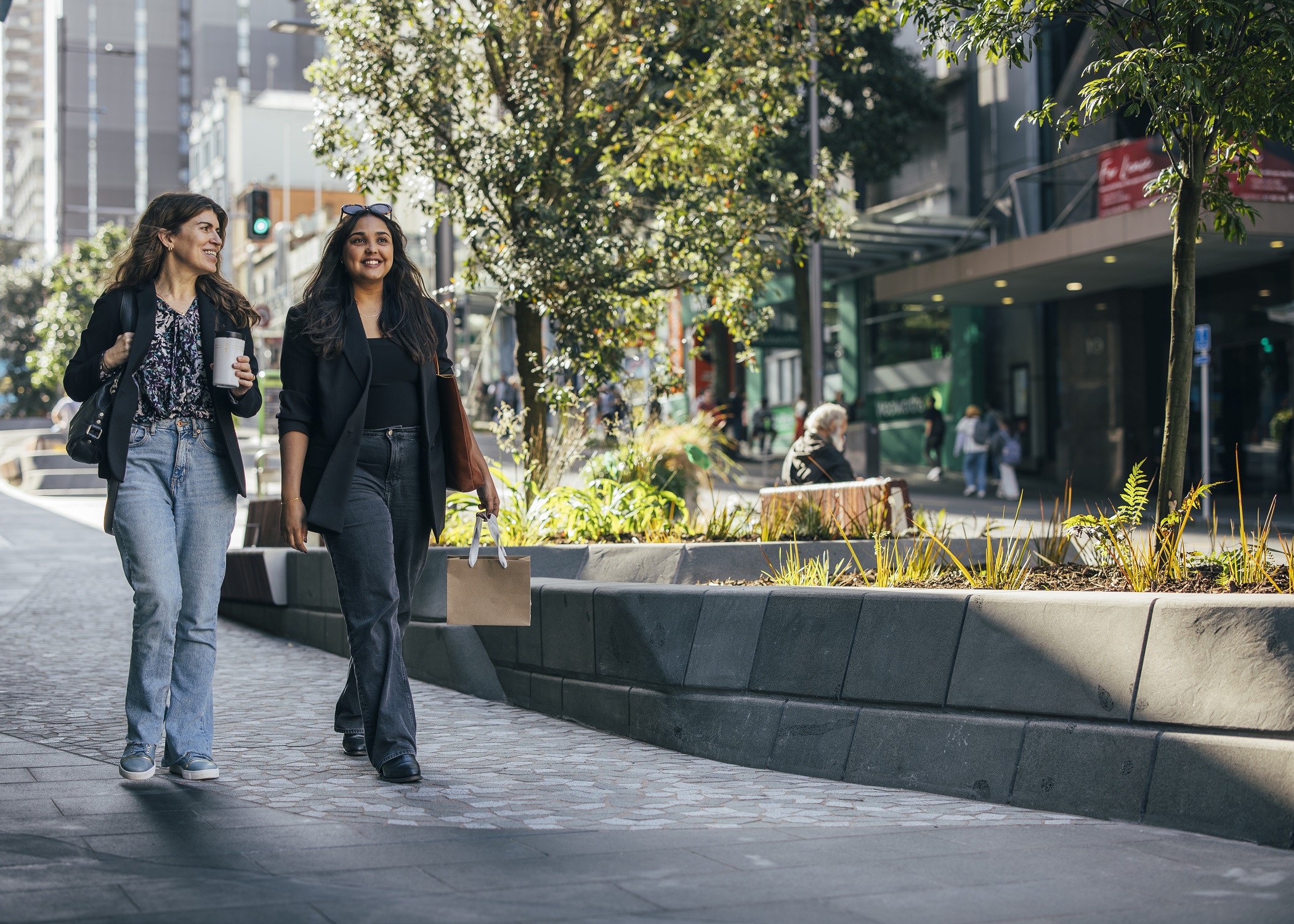The first section of a redesigned Victoria Street - from Elliott Street to Queen Street - has opened to the public. It’s lighter and leafier. It feels more sociable. It functions with contemporary purpose, signposting more of what’s to come.
The milestone is another step closer to a completed station neighbourhood. Auckland Council’s midtown regeneration programme is ensuring the area will be ready for the City Rail Link (CRL) and Te Waihorotiu Station becoming operational in 2026.

The new rail network will bring thousands more people into these streets and spaces, using more transport modes than were previously available. People will arrive by rail, bus, active modes (walking or on scooters and bikes) and by car or delivery vehicle.
This shift in functionality and lift in anticipated numbers underpin the need for the repurposing and redesign of streets and spaces, improving the workings of a contemporary city.
Fresh form and function
On both sides of the street, heritage kerb stones sit next to new paving. The flowing water patterning etched into basalt pavers on the southside of the street is by artists Chris Bailey and Sally Smith – hinting at a magnificent artwork coming to the Queen Street corner in mid-2025.

By that time, the Lorne Street to Albert Park section of Victoria Street will be open and CRL’s streetscape surrounding the station portal in Victoria Street will also be finished.
The mid-section of Victoria Street from Queen Street to Lorne Street will open in 2026, once Watercare’s Midtown Wastewater Upgrades are delivered. Read more about this work here and Auckland Council’s recent update here.
Te Hā Noa emerges
Victoria Street is starting to live and breathe the meaning of its new name, Te Hā Noa. The name Te Hā Noa was gifted by mana whenua, encouraging people to take a breath and enjoy the experience of the sights and sounds around them.
Mana whenua also guided the terracing design of the stone tree pits, referencing the volcanic geology and forms of Tāmaki Makaurau.
Some of the tree pits also serve a sustainable purpose in the city’s stormwater drainage system. Surface rainwater from the road and paved surfaces is dispersed into the tree pits, where it irrigates the trees and filters the water before it flows to the sea.
Uplighting the trees
When people come to enjoy Christmas lights in city centre squares and Queen Street this festive season, they will also see the uplighting of trees, widened footpaths, and spaces with new seating for visitors to sit and pause in this finished section of Victoria Street.
Visitors might also witness the first flowering of pōhutukawa which were among the native trees crane-lifted into the street in September. Pūriri, taraire and tītoki are the other varieties planted, with 900 plants further greening new gardens at street level. Read more here.

In time, Te Hā Noa will form a green link across the city, linking two much-loved city parks – Rangipuke / Albert Park and Waikōkota / Victoria Park.
Policy and Planning Committee Chair Councillor Richard Hills says people have already been commenting on the new mature trees and gardens in the street, with places to sit and enjoy the city centre.
“The opening of the first section of Te Hā Noa has allowed people to start experiencing the refreshed atmosphere and functionality of the redesigned Victoria Street, which is truly exciting.
“I’m looking forward to our new streets and spaces, an underground rail network, better bus routes, billions of dollars of private sector investment in the area, and a thriving arts quarter, bordered by three beautiful city parks – Myers, Albert and Victoria.
“Summer is going to be a wonderful time for people to experience these upgrades, including widened footpaths to stroll on and take in the new trees, which provide shade in the day and light up at night,” Councillor Hills says.
Complementary streets
Victoria Street is one of three east-west streets in the Te Waihorotiu Station neighbourhood undergoing a major transformation to create a new gateway for the city centre.
Before the regeneration of midtown, Victoria Street, Wellesley Street and Mayoral Drive were dense traffic routes carrying more than four lanes of cars, trucks and buses, with cyclists hugging the edges, pedestrians vying with scooters along narrow footpaths and a noisy environment for businesses.
In the regeneration, Wellesley Street will become an important central city bus interchange, and the upgraded Victoria Street will make connecting between walking, cycling, high frequency bus routes, and the train station easier and safer.

Jenny Larking, Auckland Council Head of City Centre Programmes is proud of the station neighbourhood her team and the wider Auckland Council group are delivering in midtown.
“We recognise that beautiful public spaces encourage social interaction, creating a strong sense of community and belonging. These spaces become the stages where city life unfolds, memories are made, and a city’s identity is forged.
“We are creating streets and spaces that are authentic, safe, sustainable and reflective of our place in the world, with mana whenua-led expression woven throughout, while continuing to support the operations of a busy city centre,” she said.
Some midtown upgrades are already complete including Queen Street, upper Federal Street and Myers Park. Learn more about the midtown regeneration here.
Read more about the private sector’s confidence in the area here and the wider city centre’s transformation here.
Photo credit: Jay Farnworth.
Auckland Council’s investment in this first section of the upgrade of Victoria Street is part of a total budget of $50.5 million which covers the full delivery of Te Hā Noa between Elliott Street and Albert Park, with 67.7 percent ($34.2 million) funded by the city centre targeted rate. Construction will be delivered in stages across four years.


